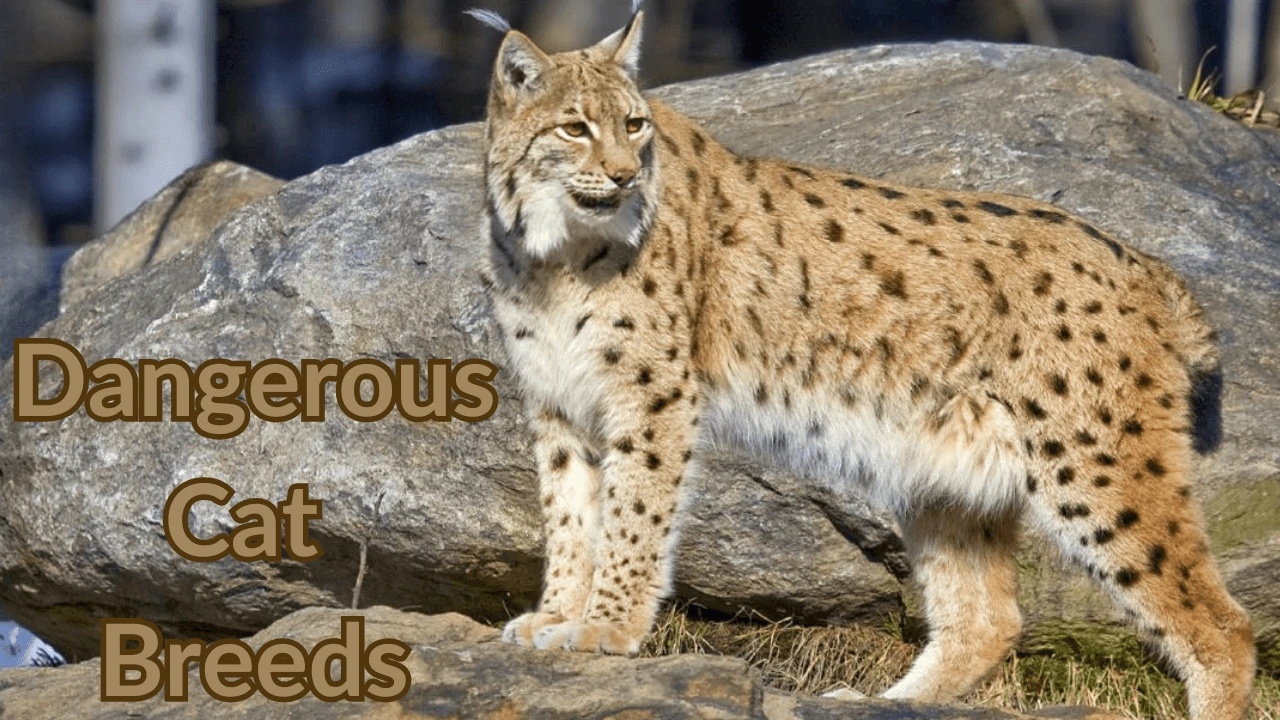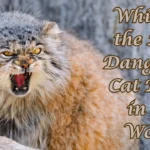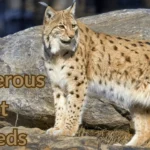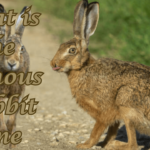I was taken aback when news emerged of dangerous cat breeds which are usually peaceful and independent. However, the truth about these breeds often comes with falsehoods or stereotypes surrounding them so it didn’t surprise me at all that one day I found out.
Despite being labeled as aggressive due to their wild appearance the Bengal cat is more playful than an animal. Siamese cats are known and often considered fierce breeds mostly because of their strong vocal cords. However, they don’t shy away from attention and will always be in charge at all times when faced with overwhelming numbers of owners.
Despite being known for its large size the Maine Coon is often mistook for an aggressive breed that’s usually considered to be gentle giants who love spending time with humans. Although some other breeds like the Savannah may have originated from wild animals such as cats in Georgia and New Hampshire respectively.
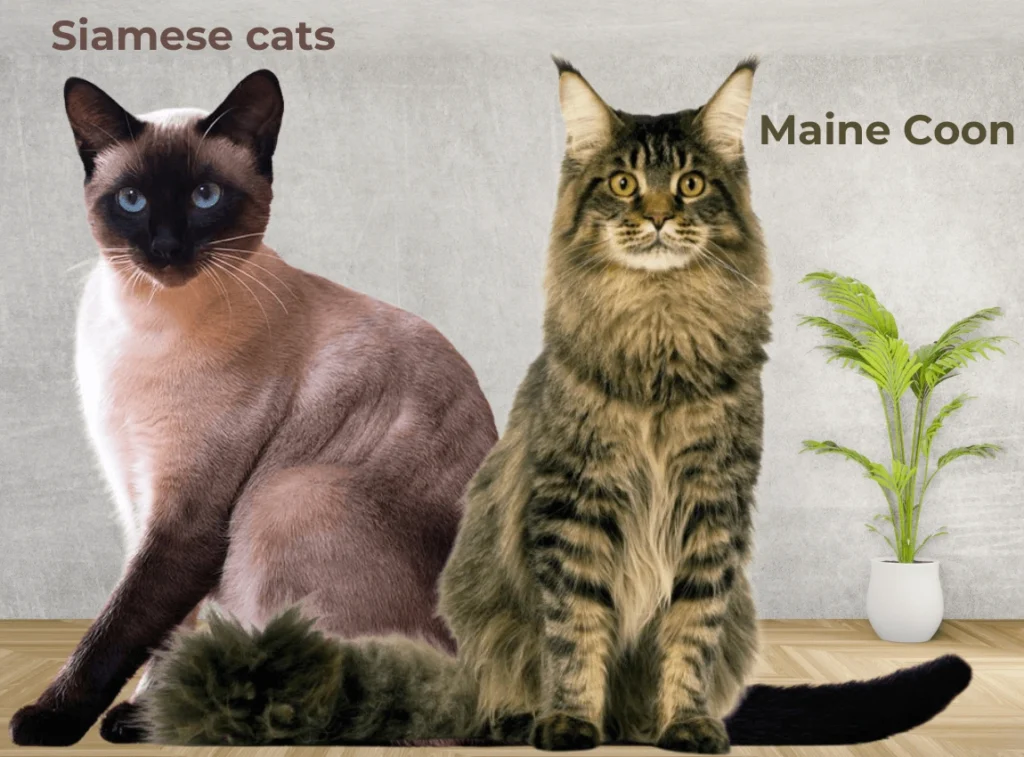
They are still domesticated felines that can make great pets with proper training. I have learned that a cat’s behavior is determined by how they are raised not their breed. Every feline has its unique personality and most types can be loyal companions with proper care.
- What Makes a Cat Breed Potentially Dangerous:
- Notable Aggressive Cat Breeds with Dangerous Reputations:
- Factors Influencing Dangerous Aggression in Cats Breeds Behavior:
- Safety Tips for Owning High-Energy or Large Dangerous Cat Breeds:
- Debunking Myths about Dangerous Cats Breed Facts and Truths:
- Myth 1: All Cats are Aggressive:
- Fact about Aggressive:
- Myth 2: Cats are Always Alone and Independent:
- Fact about Alone and Independent:
- Myth 3: A Cat’s Claws Are Dangerous:
- Fact about Claws Dangerous:
- Myth 4: Cats Can’t Be Trained:
- Fact about Can’t be Trained:
- Myth 5: All Cats are “Dangerous” Hunters:
- Fact about Dangerous Hunters:
- Conclusion:
- Frequently Asked Question:
What Makes a Cat Breed Potentially Dangerous:
While the term “dangerous” may seem extreme it is important to recognize the factors that contribute to this label. Some cat breeds have characteristics that make them difficult to manage such as:
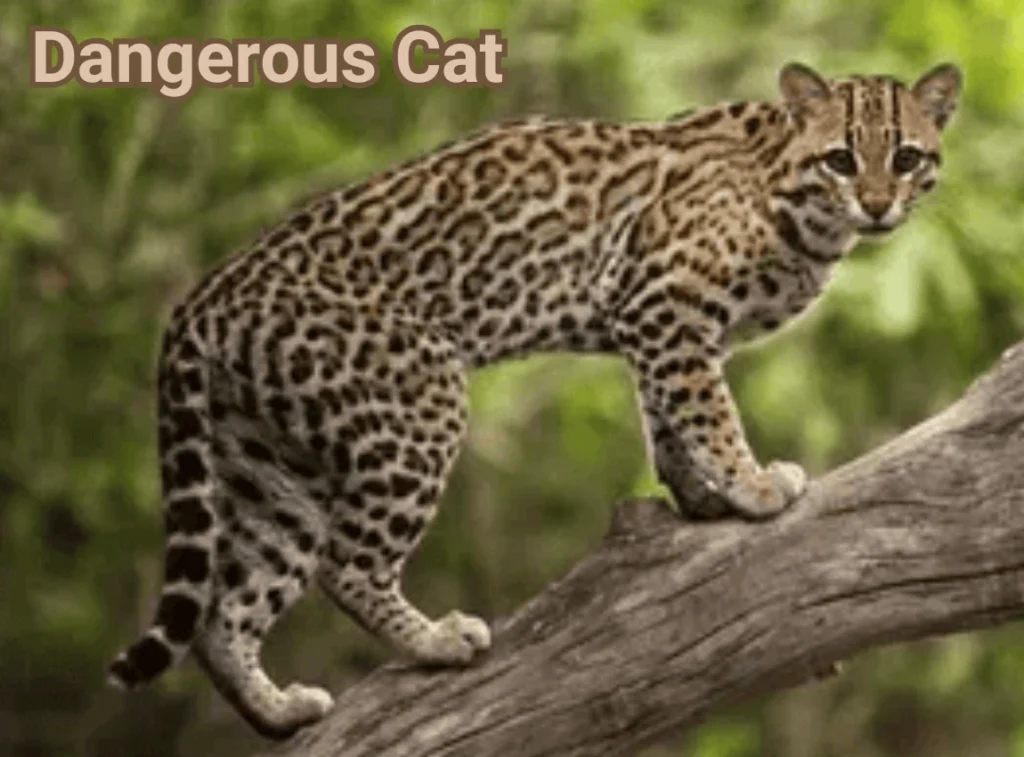
Size and strength:
Large muscular cats can cause unintentional harm especially when playing or feeling threatened. Because of their size they are more powerful than smaller domestic cats and are more likely to be injured in accidental or defensive situations.
Hunting instincts:
Cats are natural predators. Cat breeds close to their wild ancestors or bred for exotic characteristics often retain strong hunting instincts. Without proper socialization these cats may view small pets and even children as prey.
Temperament and behavioral tendencies:
Some cat breeds are naturally independent, territorial or nervous. This does not mean that they are unsuitable as pets. But owners need to take the time to understand and meet their unique needs.
Socialization and Training:
Lack of early socialization can lead to timidity and aggression. Breeds with strong personalities need proper training so they can safely interact with humans and other animals.
Environmental factors:
Cats can become aggressive when they are stressed, fearful or overstimulated. To minimize these triggers it is important to provide the right environment especially for high-energy breeds.
Notable Aggressive Cat Breeds with Dangerous Reputations:
Cats are loved for their grace, independence and charm but some breeds have a reputation for being aggressive or “dangerous”. While this doesn’t mean they are inherently harmful some of their traits can make them challenging for inexperienced owners.
Knowing these traits is important to create a safe and happy environment for both cats and people. Here are some cat breeds that, although striking and charming need careful consideration due to their unique characteristics:
1. Savannah Cat:
Savannah cats are often referred to as “dogs” due to their strong sense of adventure and ability to attack humans. They thrive in both domestication (a mix between two pets) and socialization through play, recreation, and outdoor activities.
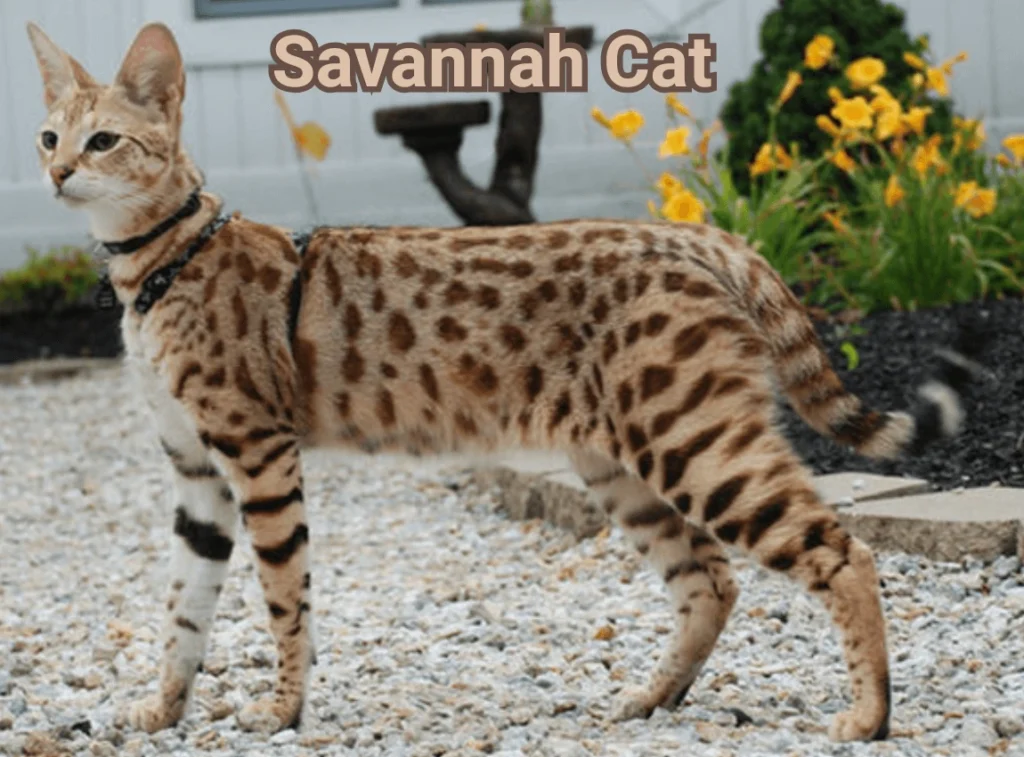
Despite being ideal companions they can be quite risky. Their strong hunting instincts may pose an obstacle to smaller pets and are typically seen as daring or aggressive when exposed to stressors or inadequate social interactions. As such these animals have high levels of activity that make them highly reactive and best served by older owners.
- Background: Savannah cat hybrids are a result of the interbreeding between domestic cats and African servals. The Savannah feline looks like any small wild dog which is quite impressive considering its size.
- Traits: Savannah cats are large vigorous creatures that exhibit excellent prey taste and hunting skills. They can jump up to 40ft (100m) in a single attempt and require considerable mental as well as physical effort torouse themselves.
- Challenges: They may be destructive with their high energy levels and may not know how to interact. Lack of proper training can lead to destructive behavior making socialization challenging.
2. Bengal Cat:
The Bengal cat is a mix of domestic cats and the Asian leopard cat with contrasting features. It has striped fur on its coat and enjoys playing outside when not in charge. They are highly intelligent creatures that need constant mental stimulation to prevent destructive actions such as puberty or warbler behavior.
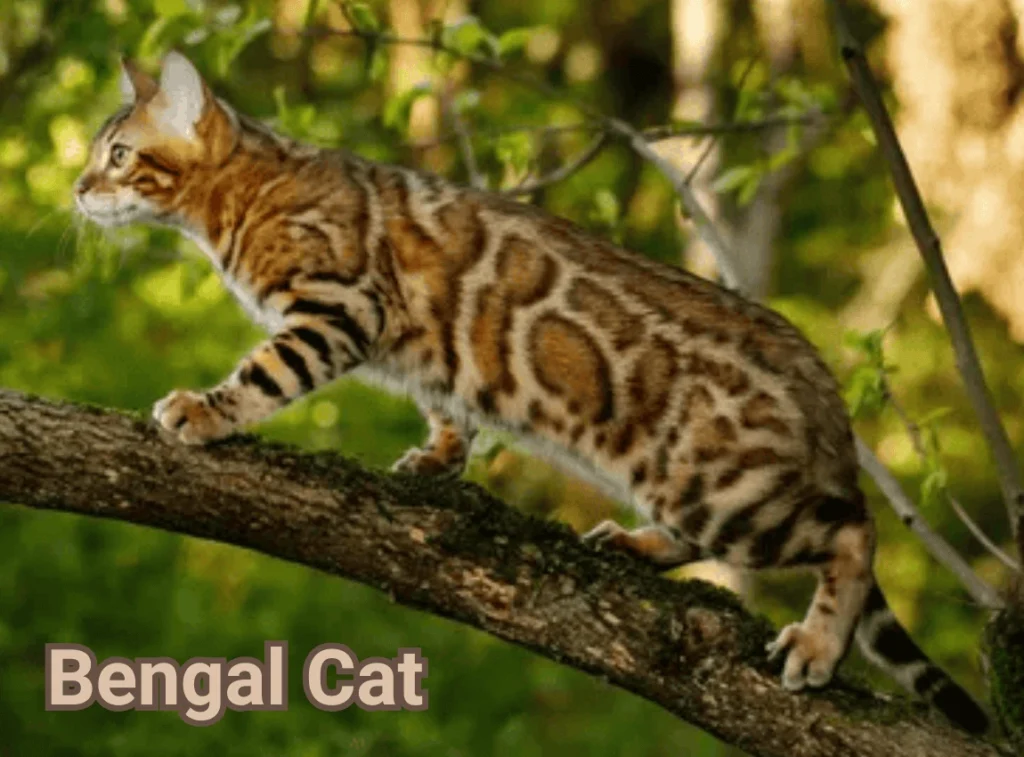
Bengals cat are known for their affectionate nature but they can be overbearing and aggressive when interacting with smaller animals in homes. Smaller animal households may find them appealing as well.
They may become territorial quickly due to the presence of energetic owners who lack social skills. To manage these behaviors effectively it is best practice to train and nurture young ones closely before interactions occur between domesticated dogs or cats.
- Background: Bengal cats are a blend of domesticated and exotic breeds with the Asian leopard cat being their primary attraction. Their distinctive coat is often distinguished by its striking white fur that gives them an edge over other felines in this population.
- Traits: Bengals are highly intelligent curious and territorial. They require constant interaction to thrive in an active household environment.
- Challenges: Bengals can exhibit aggressive behavior and become territorial when they are bored or stressed. This may lead to conflicts with other household pets as well which poses challenges for the breed.
3. Chausie Cat:
A crossbreed of a domestic cat and the jungle cat the Chausie is incredibly large and energetic. He’s known for his agility and curiosity while also being well-suited to social situations where cats need plenty of room or stimulation to thrive.
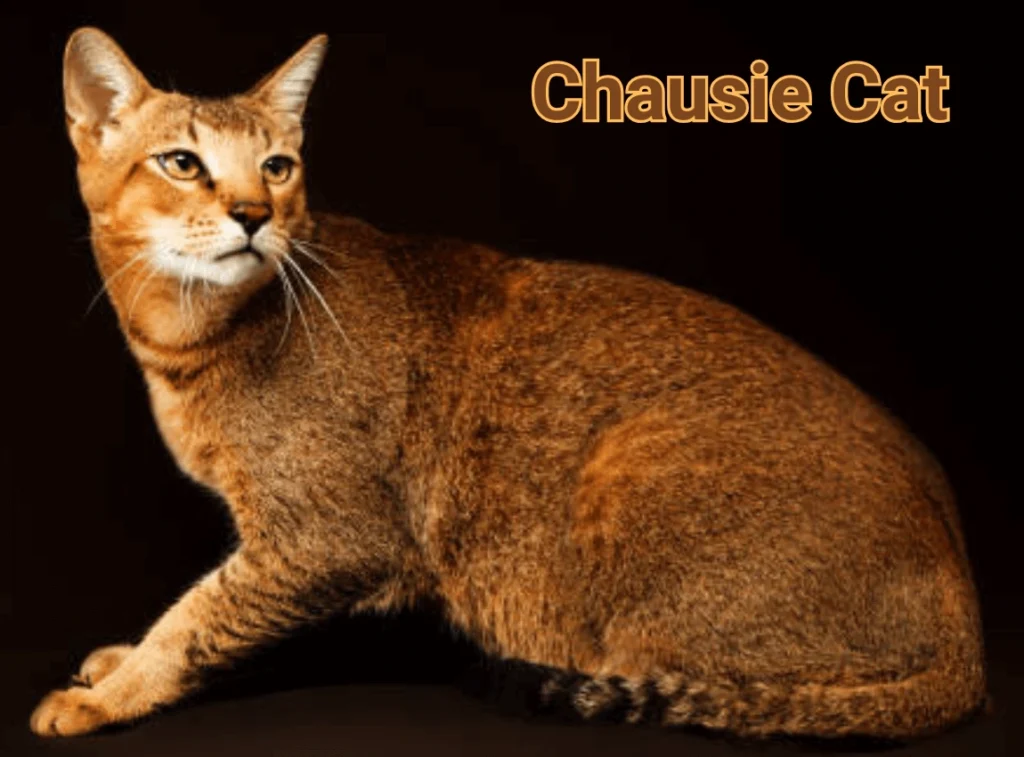
Despite their size and energy, they can be dangerous to homes with children or pets due to potential hazards. They are loyal to the owners of these creatures but require skilled handling and frequent interaction as well.
- Background: The Chausie cat is a rare breed with an unusual appearance having developed from the hybridization of domestic cats and wild jungle cats.
- Traits: These cats are self-reliant, athletic and adventurous. They require significant space to thrive and mental stimulation.
- Challenges: A well-prepared environment and handling of the Chausies are essential for first-time owners as they lack confidence due to their independent streaking.
4. Maine Coon:
Maine Coons are a very large domestic cat breed known for their friendly and gentle demeanor. However, due to their size and strength they can be formidable opponents in any situation. They are highly intelligent and enjoy engaging with humans when outside (even up high if the person is too stimulated).
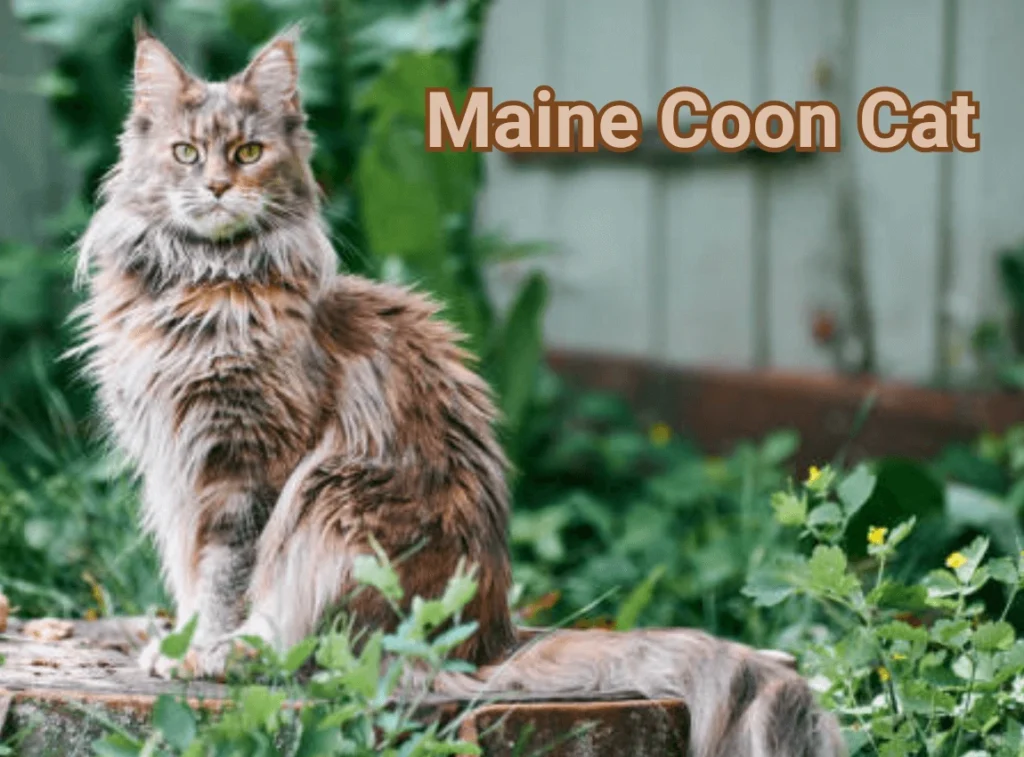
Maine Coons are generally sociable with children and other pets but their hunting instincts remain strong. They require consistent training to channel energy and maintain proper behavior. Although they tend to be gentler than others (like Labradoodles or Graycaps) the pup requires regular care from September through May.
- Background: The Maine Coon is the largest domesticated cat breed and has earned its reputation as one of the most dangerous gentle giants cat in the world.
- Traits: Although they are generally friendly their size and strength make them a significant challenge when used in stressful or mishandled situations.
- Challenges: Despite their non-aggressive nature they can be injured due to their size and ability to play tricks or defend.
5. Sphynx Cat:
The Sphynx cat is a type of feline that can be easily identified due to its hairless appearance and outgoing personality. These cats are highly social craving constant attention from others while remaining friendly. However, their lack of fur makes them susceptible to environmental changes in the wild.
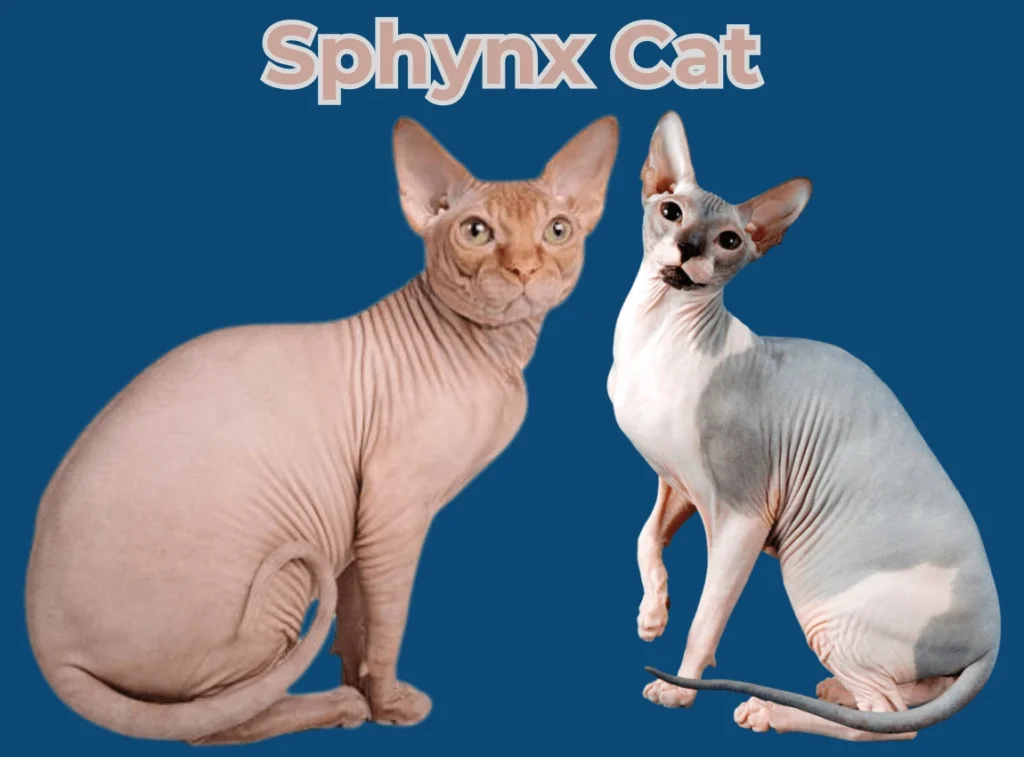
Sphynx cats may become aggressive and territorial if not socialized appropriately especially in households with multiple pets. They require warmth and affectionate behavior that requires dedicated attention to detail. However, they are not dangerous due to their temperamental nature and need for exceptional care from trained professionals.
- Background: The Sphynx is recognized for its sly, curvaceous appearance and warm temperament.
- Traits: They are highly social and crave attention but their lack of fur makes them sensitive to environmental changes.
- Challenges: Uncertainty can be a result of stress or discomfort which may cause overbeating and unforeseeable behavior in response to perceived threats.
6. Siamese Cats:
Siamese cats are well-known for their vocal nature and strong attachment to their owners. However, this can lead to possessive and territorial tendencies if they feel ignored or threatened. Proper socialization and interactive play may help reduce aggressive behavior in these pets.
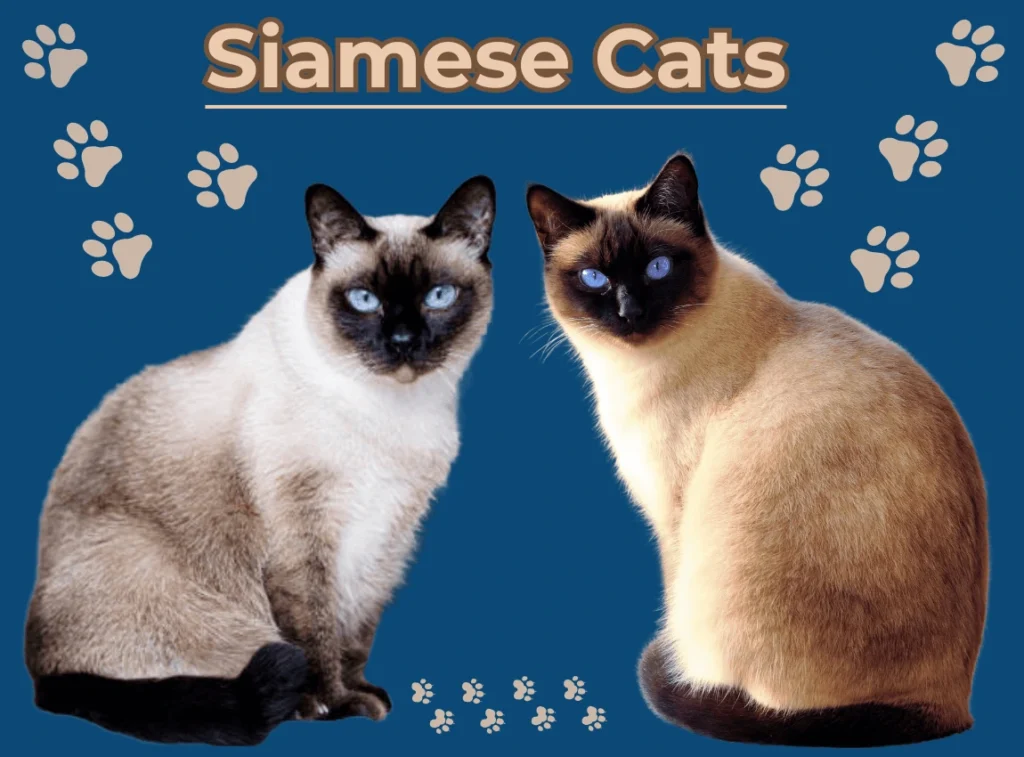
- Background: Originating in Thailand (formerly Siam) these cats have a rich royal history, with blue almond-shaped eyes and sleek coats. They are one of the oldest breeds known for their distinctive color point pattern and striking features.
- Traits: Highly vocal and playful often engaging in conversation with their owners. They also form strong bonds emotionally bonded relationships with other humans. Furthermore, they are known for playing games as well as being intelligent or curious about puzzles.
- Challenges: They may exhibit jealousy or possessive behavior become occupied with others and need attention that results in anxiety (or destructive habits) when ignored. Additionally, they are vulnerable to stress caused by changes in their daily routines.
7. Abyssinian Cats:
Abyssinians cat are friendly, playful and intelligent felines with a strong personality. They can be overwhelming to new owners due to their tendency to invade other cats’ spaces or feel unwelcoming at times. They need to have clear boundaries when exploring unfamiliar territory. Therefore, providing mental stimulation through territories will help prevent territorial aggression.
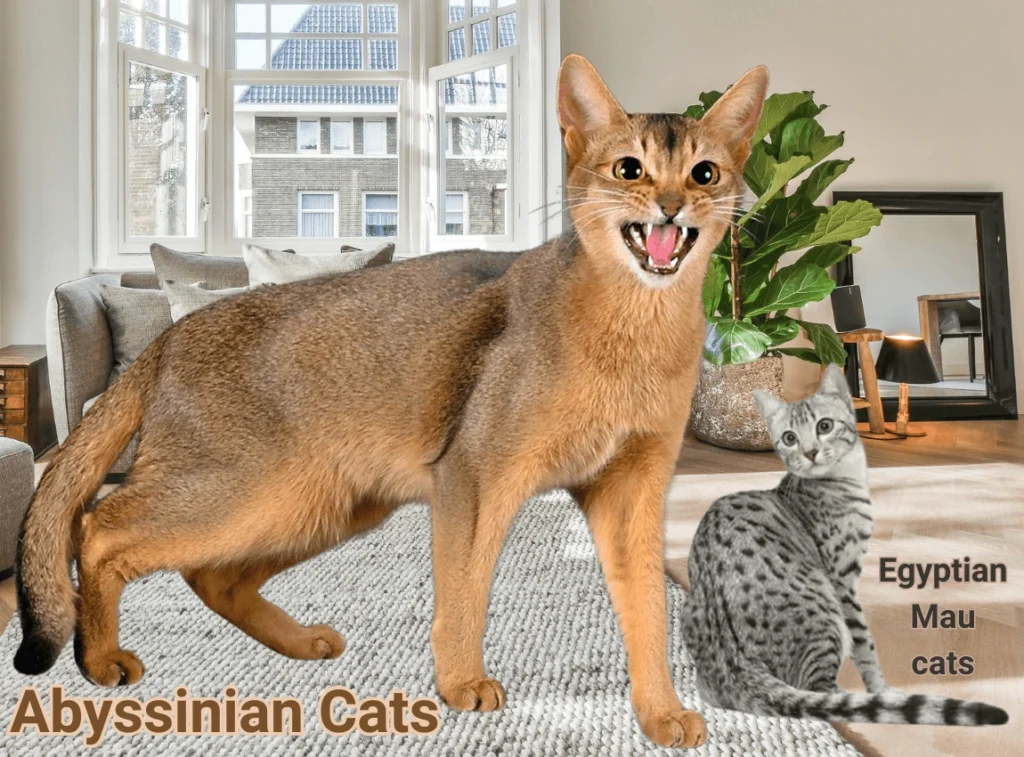
- Background: Originating in ancient Egyptian Mau cats with a cat-like appearance similar to those of sacred felines found throughout the country. One of the oldest breeds known for their warm colors and sleek, ticked fur cats are also among these.
- Traits: Often found in high-pressure situations these individuals are energetic and athletic. They can climb stairs effortlessly to reach their destination. They explore nearby areas with their hands curious and intelligent often seeking interaction while exploring nature.
- Challenges: High energy levels necessitate a lot of playtime and stimulation to prevent boredom. Can be territorial especially in multi-cat households. They require vertical spaces such as cat trees or shelves to satisfy their climbing instincts.
Factors Influencing Dangerous Aggression in Cats Breeds Behavior:
Individual dog behavior varies greatly regardless of breed. Understanding the following factors can help owners create a safe and supportive environment:
Genetics and Environment:
While genetics play a role in shaping a cat’s temperament environment and upbringing also play a large role. Proper care can mitigate many traits that are difficult to control.
Early Socialization:
Kittens that are exposed to different environments, people and animals from an early age tend to be more adaptable and less fearful.
Stimulation and Exercise:
Cats especially the more energetic breeds need mental and physical stimulation to avoid boredom that could lead to destructive or aggressive behavior.
Body language and communication:
Understanding your cat’s body language such as pricked ears, tail twitching or dilated pupils, can help avoid negative interactions.
Safety Tips for Owning High-Energy or Large Dangerous Cat Breeds:
If you’re considering adopting one of these breeds follow these tips to create a safe and happy environment:
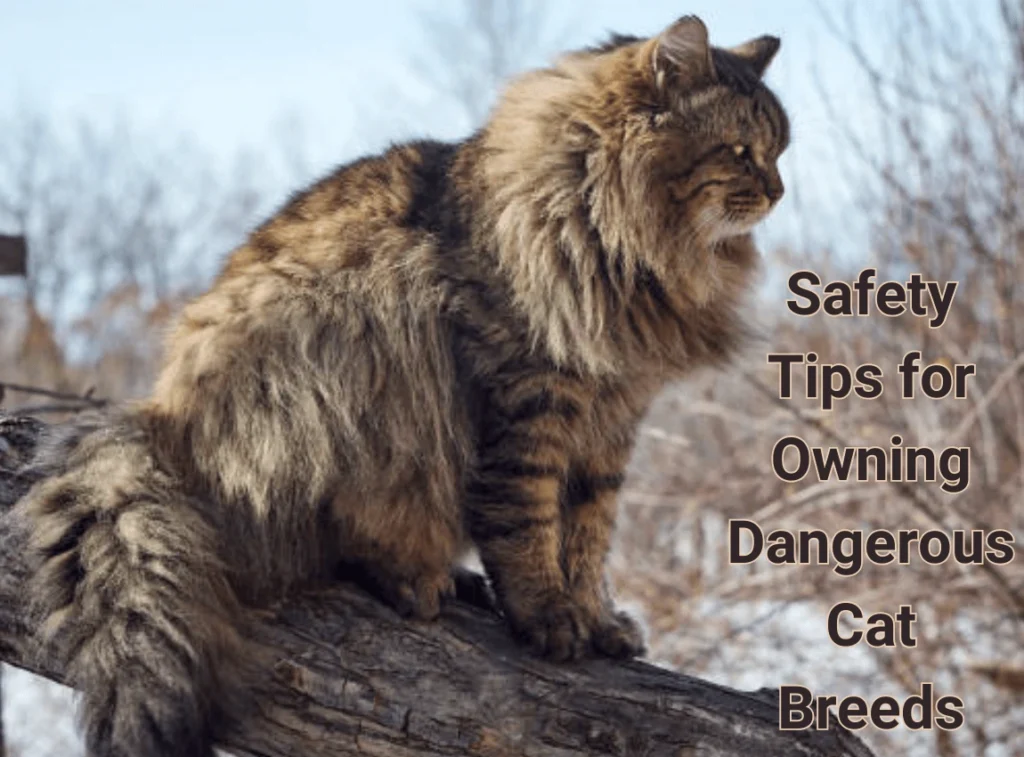
Proper Training and Socialization:
- Start teaching and practicing social skills to your cat at a young age.
- Expose them to various situations, sounds and people to build their confidence.
Provide Enrichment:
- Obtain interactive toys, scratching posts and climbing structures by investing in toys.
- Engage them in play sessions to channel their energy positively.
Supervise Interactions:
- Monitor interactions with children and other pets to prevent misunderstandings or accidental injuries.
- Ensure that children learn how to handle cats in an appropriate and considerate manner.
Regular Veterinary Care:
- Schedule regular checkups to ensure your cat is healthy and free from pain or illness that could trigger aggression.
- Discuss breed-specific health concerns with your veterinarian.
Recognize Signs of Stress:
- Identify triggers that may cause stress in your cat such as loud noises or changes in routine.
- Provide a safe space where your cat can retreat if they feel overwhelmed.
Debunking Myths about Dangerous Cats Breed Facts and Truths:
Many people have a pet cat but many of them are misdiagnosed as being overly aggressive or dangerous. While this may seem like an unsettling idea at first glance. There is little evidence to support your claim that most cats will be fine with any potential aggression and become very scared when they come out playing in public.
Myth 1: All Cats are Aggressive:
Cats are often portrayed as aggressive and hostile but this is not the case. While some cats may display aggressive on occasion due to fear or stress caused by unfamiliar territory others demonstrate it through physical force.
Fact about Aggressive:
Cats are known for their affectionate behavior and tend to form relationships with owners. Aggressive behaviors in cats can be a result of poor socialization, traumatic experiences, or illness. In most cases, training dogs and maintaining proper surroundings is the only way one should manage aggressive behavior.
Myth 2: Cats are Always Alone and Independent:
Although cats are often depicted as aggressive and hostile this is not the case. At the same time some may display aggression occasionally due to fear or stress caused by unfamiliar territory. Others demonstrate it through physical force rather than verbal cunning and excessive body kicking. When used against exceptional individuals it is known this time in practice only.
Fact about Alone and Independent:
Cats are highly affectionate and often form relationships with their owners. However aggressive behavior can also arise from a lack of social support or trauma. In most cases only training cats and maintaining proper surroundings is necessary to manage the aggression.
Myth 3: A Cat’s Claws Are Dangerous:
Cats are often thought of as intimidating weapons with their claws ready to strike at any moment. Although cats can scratch on occasion it is usually done in response and not for aggression or personal reasons.
Fact about Claws Dangerous:
Cats use their claws for climbing, playing and hunting. They should also maintain regular nail trimming to prevent them from scratching or burying their fur on the ground. Additionally, they may provide cushion material as well in case of an accident where cats become startled by scratches.
Myth 4: Cats Can’t Be Trained:
Despite the belief that cats cannot be trained they can learn tricks and commands. Patience, positive reinforcement, and good behavior will help you train your cat to perform tasks correctly in under 30 minutes or as advertised.
Fact about Can’t be Trained:
Positive reinforcement is a welcome activity for cats. Treats, affectionate acts and praise are used to teach them behavior. For example sitting still in the window silliness of your litter box, coming back when called by their owner or simply using that same day with an empty container instead of being left alone at home.
Myth 5: All Cats are “Dangerous” Hunters:
Cats are often portrayed as aggressive predators but not all felines have been naturalized killer animals. Although they may possess their hunting instinct most cats don’t pose any significant danger to humans or other creatures except for those that provoke them.
Fact about Dangerous Hunters:
Hunting is a behavior that cats typically engage in for sustenance or to satisfy their instincts. Domesticated felines often prefer hunting toys and small creatures rather than domesticating them. As they are more likely to be responsible for satisfying these prey with the occasional game item instead of harming them. It though there may also come across other cat species who exhibit this behavior.
Also Read: https://thepetlive.com/top-10-oldest-cat-breeds/
Conclusion:
In truth there is no single cat breed that can be dangerous. Although some breeds like Bengal or Savannah cats have wild ancestry their temperament changes due to proper socialization and care. Mythologies for cats considered dangerous often stem from misinformation media portrayals of felines in the pressurizing literature, or even those drawn by animals.
Cats can develop a positive bond with others such as Siamese and Maine Coons who are known for their affectionate demeanor. Sphynx cats tend to be more playful than the other types of cat species. Each kitten is unique due to its personality, needs, and environment. The right approach to training and care can make any cat a genuine feline.
But it’s important not to be afraid of these magnificent cats rather than viewing them from the outside. It is also crucial to understand how their behavior changes over time as opposed to whether they are determined by luck or chance. This distinction plays an enormous role in understanding why certain breeds have such distinct dispositions.
Frequently Asked Question:
Are some cats naturally aggressive?
Yes, aggression is usually triggered by fear or stressors rather than environmental factors. Socialization and care can help reduce aggressive tendencies through positive reinforcement measures such as self-care for example, treatment.
What is the most aggressive type of cat?
The aggression level of cats varies according to their temperament not necessarily from breed. However, like the Bengal cat they may seem more energetic and assertive than other felines such as cats or pandas. However, aggression is generally associated with pure furry domestication rather than offensive behavior on occasion.
What is the most aggressive feline?
Dangerous wild cats are known for being the most aggressive. Domesticated felines like those dogs such as Savannah can appear wild and be friendly. But usually requires care to make room between owners with a loose litter or two.
What breed of cat doesn’t like to be held?
Cats like the Persian and some Shorthairs may not enjoy being held for long periods due to their independent nature. However, this is subject to variation depending on individual characteristics.
Are there unhealthy cat breeds?
While Persians and Siamese can be prone to breathing problems or heart conditions. Their health is closely tied to genetic factors, diet, and care.
Are Bengal cats dangerous?
Bengal cats are not dangerous as they possess qualities such as energy and curiosity. They thrive in a stimulating environment that fosters their companionship with others.
Is the Maine Coon aggressive towards strangers?
Maine Coons cats are known for their gentle and friendly nature. They tend to be quiet around a group of people they encounter which is usually acceptable when introduced properly.
Are Savannah cats wild and untamable?
Savannah cats are domesticated and can be loyal companions with proper care and socialization.
